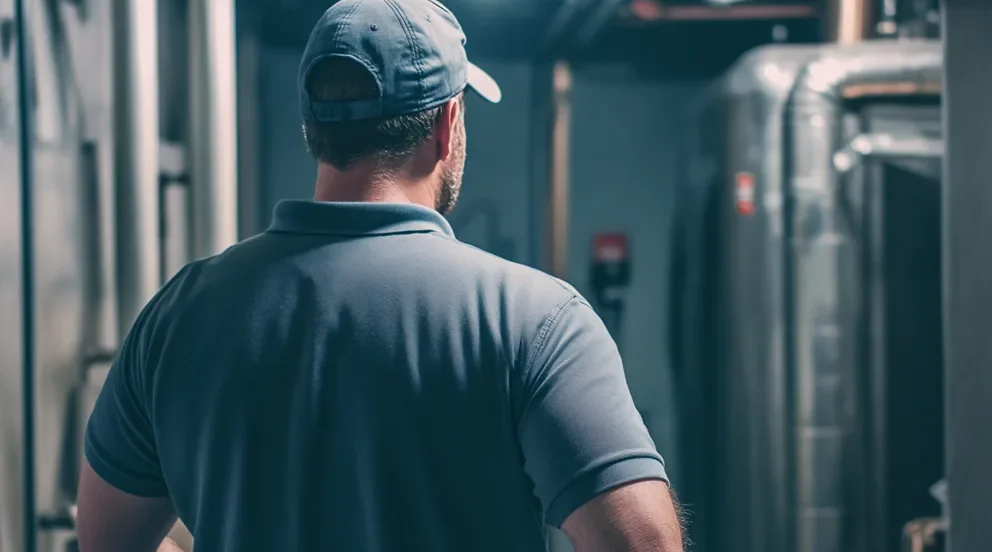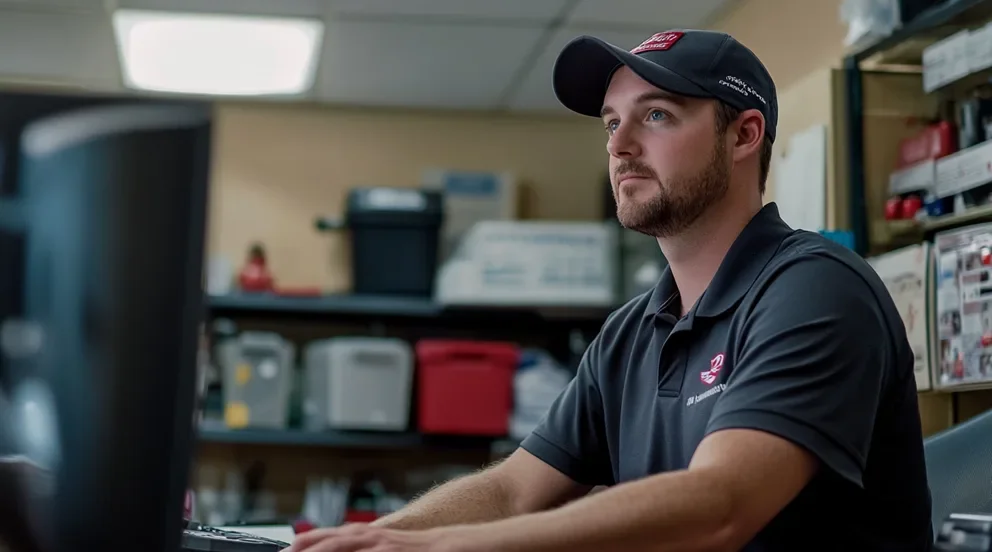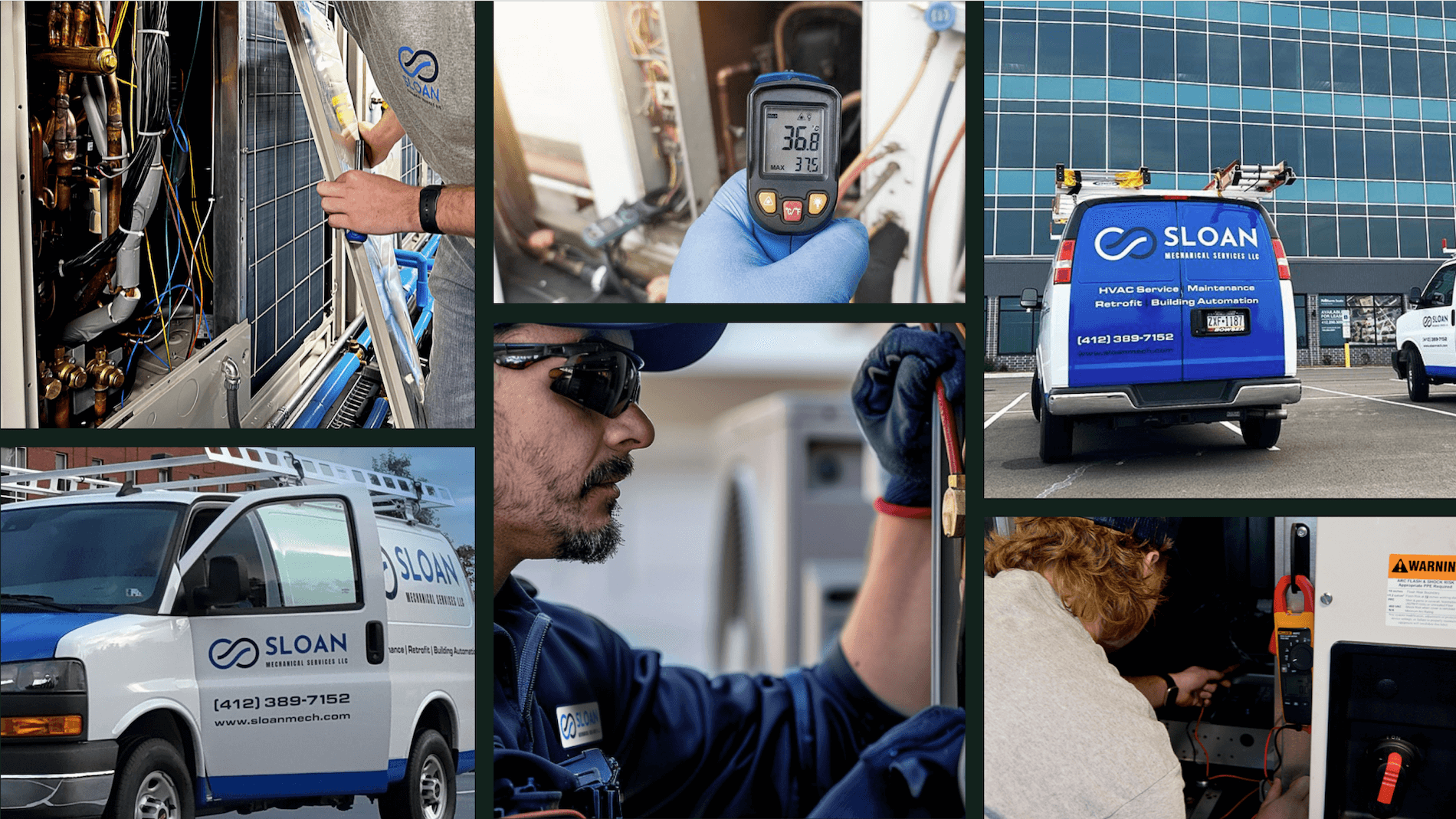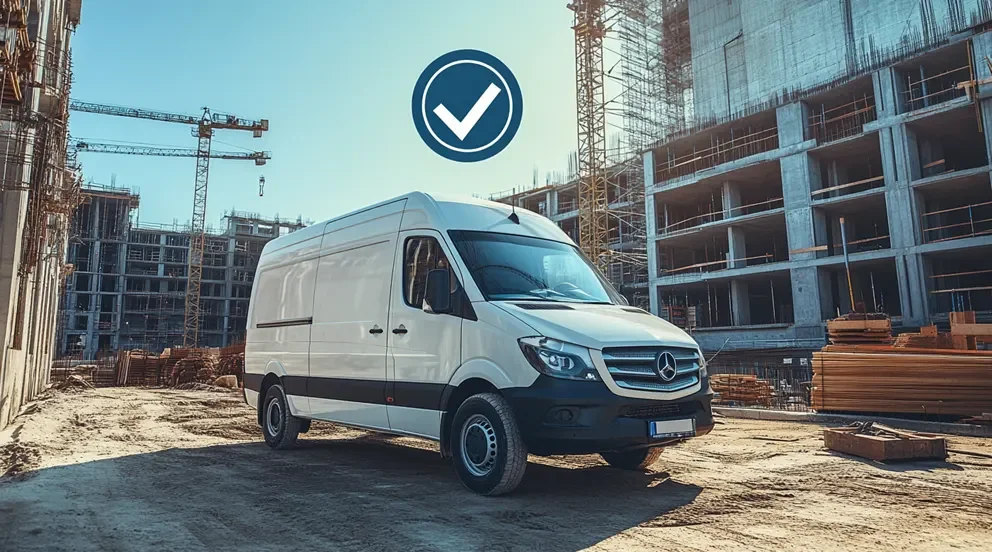Important
While BuildOps does not currently offer a plumbing flat rate pricing software, we’re always looking into new and exciting tools and technology that are moving the industry forward, which is why we’re discussing the subject here.
Plumbing jobs move fast. Pricing them shouldn’t slow you down. That’s where plumbing flat rate pricing software comes in — giving your crew consistent, transparent rates without wasting time crunching numbers on-site. But picking the best tool for the job takes more than a quick search.
Whether you're quoting residential service calls or managing bids on larger commercial projects, the right flat rate plumbing software can change the game. This guide walks through what contractors are using today, why some pricing models miss the mark, and what features make a real difference in the field. If you're part of the plumbing industry, this breakdown will help you cut through the noise. Here’s what we’ll cover:
- Choosing the right flat rate pricing software for plumbing contractors
- Common plumbing contractor pricing models
- Why a flat rate pricing model falls short for plumbing contractors
- 5 features to look for in a flat rate pricing software for plumbers
- 7 best plumbing flat rate pricing software
- 6 benefits of using flat rate pricing software as a plumber
- 4 common flat rate pricing software FAQs answered for plumbing contractors
Before we break down the options, let’s start with how to approach choosing plumbing flat rate software that actually fits the way your team works — and the jobs you’re running every day.
Choosing the right flat rate pricing software for plumbing contractors
The pricing tool you choose can speed up service calls — or create more problems than it solves. Plumbing flat rate pricing software should make it easier for your team to deliver quotes quickly, stay consistent across jobs, and avoid second-guessing in front of the customer. But with so many options out there, how do you know which one fits the way your business actually runs?
If you're weighing your options, our plumbing flat rate pricing guide breaks down how contractors are approaching flat rate systems today. Pair that with the key questions below, and you’ll be in a much better spot to choose software that helps — not hinders — your crew.
Here’s how to frame your thinking as you look for a tool that won’t let your team down in the field.
- Workflow compatibility - Is the software built to match how our team currently quotes and bills jobs? Will it integrate smoothly with our existing invoicing or dispatch tools? Can it handle both one-off tasks and multi-day projects without friction?
- User experience - Is it easy for techs in the field to pull up prices without a learning curve? Will office staff be able to update service rates or descriptions quickly? Is mobile access fast and reliable when the signal is spotty?
- Scalability - Can the software grow with us as we expand to more trucks or locations? Does it support multiple users without slowing down or breaking workflows? Are there permission controls so roles are clearly separated?
- Support and reliability - What happens when something breaks — is live support available? How often is the software updated to match industry changes or codes? Are we buying into a vendor that’s trusted in the plumbing space?
- Features - Does it offer customizable price books or prebuilt templates? Are there tools for upsell recommendations or bundling services? Can it automate syncing with estimates, work orders, and invoices?
Now that you’ve got the key questions in mind, let’s look at the pricing models plumbing contractors are actually using — and how flat rate stacks up.
Common plumbing contractor pricing models
Before diving into specific platforms, it’s worth understanding how pricing gets structured across the plumbing trade. Different models offer different levels of flexibility and predictability — and the one you choose can seriously affect your cash flow, customer trust, and scheduling efficiency.
Here’s a quick breakdown of the most common pricing models plumbing contractors use today:
- Flat rate: With flat rate pricing, the customer pays a fixed cost for a specific job, no matter how long it takes. This model builds transparency and speed into your operations — techs don’t need to do math on-site, and customers know what to expect upfront. That’s why most plumbing flat rate pricing software is centered around this approach. It works best when you’ve got standard service packages or predictable job scopes.
- Time and materials: This model charges based on labor hours plus the cost of parts and materials. It’s ideal for unpredictable or custom work where the full scope can’t be known until the job’s underway. But it can lead to pushback from customers who feel nickel-and-dimed — and it doesn’t lend itself easily to automation unless paired with strong back-end tracking.
- Tiered pricing: This structure offers a menu of service bundles at different price levels. Each tier might include added perks or faster turnaround. It’s commonly used to upsell service plans or premium packages. While not as widely adopted, some flat rate plumbing software platforms allow for tier configuration to simplify the quoting process.
Each pricing model serves its own purpose — but when speed, clarity, and consistency matter most, flat rate pricing backed by purpose-built plumbing flat rate software is hard to beat.
Why a flat rate pricing model falls short for plumbing contractors
Plumbing work is rarely predictable. A job that starts with a simple clog might uncover corroded pipes, faulty fittings, or outdated infrastructure behind the walls. Pricing in the plumbing industry has to account for that variability — and that's where things get complicated. Whether you're quoting a one-hour fix or coordinating multi-day repipes, pricing has to reflect real labor, real parts, and real conditions on-site.
Flat rate pricing models aim to standardize this. The idea is to assign fixed prices to common tasks, like water heater flushes or faucet replacements, and keep billing consistent regardless of job duration. On paper, it sounds clean. In practice, it can fall short — especially for contractors balancing both residential and commercial work. Many plumbing flat rate pricing software platforms focus on this model because it’s easy to scale and simplifies quoting in the field. But that simplicity can come at the cost of accuracy.
What often gets overlooked is how these models fit into the broader demands of field service management. In the plumbing industry, staying profitable means managing crews, schedules, materials, and customer expectations all at once. And that’s where rigid flat rate systems hit a wall. They can’t flex when a job takes an unexpected turn. They don’t account for differences in technician skill levels or regional labor costs. And they struggle to align with the dynamic workflows common in field service management — especially when job data, pricing, and billing all need to sync in real-time.
Flat rate has its place for basic, repeatable work. But for shops that need more control over pricing — especially when juggling complex jobs or custom bids — a fixed model becomes more of a limitation than a solution.
5 features to look for in a flat rate pricing software for plumbers
When your team’s in the field juggling back-to-back jobs, there’s no time to mess around with clunky tools or manual pricing methods. The best plumbing flat rate pricing software isn’t just about building flat rate menus — it’s about supporting your entire workflow from the quote to the invoice. For service contractors, it’s the difference between closing jobs fast or getting stuck in follow-up chaos. Here are five features that actually make a difference.
1. Real-time scheduling and job management
In flat rate environments, timing is everything. You need to know when a tech is free, what’s already quoted, and how long it’ll take — all in real time. That’s why solid scheduling software is a must. It connects the office to the field so you can assign jobs quickly, adjust timelines on the fly, and ensure estimates and invoices don’t get delayed. Let’s say your tech just wrapped up a sump pump install and suddenly has a two-hour window. A good system lets dispatch drop in a new job with a pre-built flat rate attached — no calls, no confusion. Everyone sees it, confirms it, and moves.
2. Dispatch board with price-locked work orders
The dispatcher isn’t just assigning jobs — they’re keeping the whole system moving. With a dispatch platform that supports flat rate plumbing software, they can build and send out work orders that already include fixed pricing. This avoids any miscommunication between what was promised and what the tech delivers. Think about a call that started as a basic toilet reset. But the dispatcher flagged it as a possible flange issue. With a smart dispatch system, they can preload alternate flat rates so the tech can pivot on-site without holding up the invoice or calling back to the office.
3. Mobile access for technicians in the field
If your techs can’t access the pricing tool from the truck or crawl space, it's not working hard enough. The best plumbing flat rate pricing software integrates with a mobile field service technician app that gives field teams instant access to pricing, customer history, and upsell options. Consider a job where your tech is replacing a disposal and notices the water supply lines are corroded. Instead of guessing or calling in, they tap into the software, pull up the correct flat rate, show the homeowner, and get sign-off — all without leaving the kitchen.
4. Seamless time tracking tied to job pricing
Even when using flat rates, tracking labor matters — especially when projects run long or involve multiple tasks. A system that includes time tracking tools helps link flat rates with real-world job duration, so you can fine-tune pricing, spot trends, and avoid unprofitable work. Say your team handles a tank install that’s consistently taking longer than quoted. With solid time logs synced to that flat rate task, you can revisit the price, adjust the labor allocation, and catch the issue before it eats your margin again.
5. Digital payments linked to flat rate invoices
Fast payment closes the loop. The best flat rate plumbing software doesn’t just quote jobs — it lets you send the invoice and collect immediately. With built-in payment processing solutions, techs can wrap a job, confirm the flat rate, and get paid on-site without delay. Now picture this: a service call finishes, and the customer is happy. Your tech confirms the job, opens the invoice, and the customer taps their card or phone — done. No more chasing payments, no gaps between flat rate and cash flow.
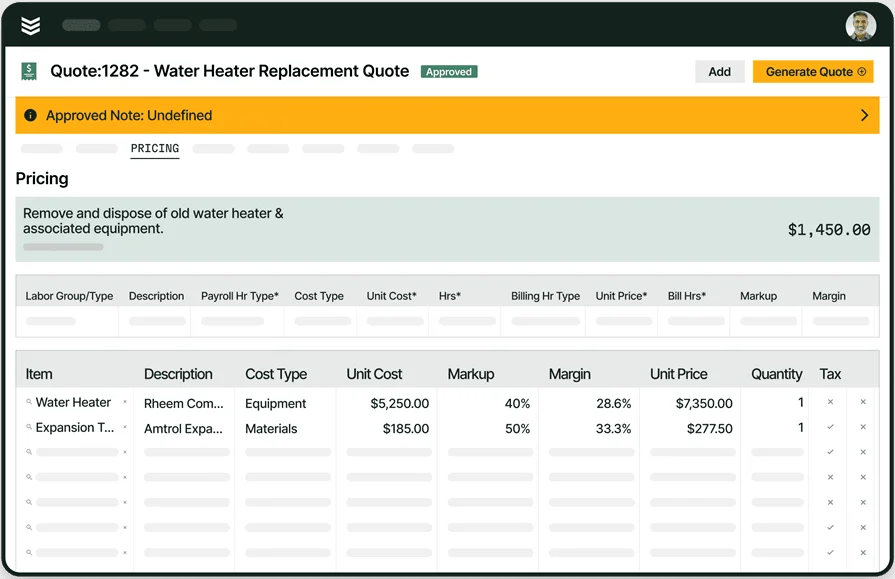
Accurately estimate projects
Quote jobs with precision so you can reduce costs and drive profits.
Other notable features to look for in plumbing flat rate pricing software
While the core features do the heavy lifting, there are several other capabilities that can help plumbing contractors fine-tune their workflows, improve visibility, and make flat rate systems even more effective. These aren't deal-breakers, but when combined with your primary tools, they can seriously improve day-to-day performance across office and field teams.
- Customer relationship management (CRM): A built-in customer CRM allows you to track client history, equipment, service preferences, and communications in one place. For flat rate pricing software, this means your quotes are informed by past work — making it easier to spot patterns or upsell relevant services during follow-ups.
- Reporting and job performance analytics: Reporting tools help you see what services are being quoted the most, which ones are hurting your margins, and how long jobs are actually taking compared to their flat rate estimates. Over time, this data helps you refine your pricing catalog and spot underperforming tasks before they become problems.
- Service agreement tracking: If your shop offers ongoing maintenance or premium service plans, service agreement management lets you tie those recurring jobs into your flat rate pricing structure. It’s especially helpful when billing on fixed cycles or offering bundled discounts tied to standard rates.
- AI powered features - AI tools can really level up pricing services for plumbers. 80% of contractors we surveyed said it will be essential to keeping up with your competition in the next 3 years. AI tools leverage historical data, and cut down on mistakes.
Now that we’ve broken down the features that matter — both essential and extra — let’s take a closer look at the top plumbing flat rate pricing software options on the market today. Whether you’re running a commercial crew, handling residential calls, or somewhere in between, there’s a platform tailored to how you work.
7 best plumbing flat rate pricing software
Not all flat rate tools are created equal — and not every plumbing business has the same needs. Some shops run high-volume residential calls. Others tackle commercial installs with tight deadlines and multiple crews. Choosing the best plumbing flat rate pricing software starts with knowing what kind of work you do and how your team operates in the field.
Here’s a breakdown of seven top options, who they work best for, and what to watch out for before you commit.
1. Best for commercial: BuildOps
BuildOps is built for commercial service contractors looking for one place to manage quoting, dispatch, job tracking, and invoicing — including flat rate pricing. It allows teams to create standardized price books while also supporting complex service estimates. Flat rate options can be embedded directly into quote templates or pulled into service workflows from mobile devices in the field, keeping the pricing process consistent across large crews and job types.
How pricing works: BuildOps offers custom pricing based on business size and operational needs. Weekly live demos are available to explore how the system fits specific workflows.
Features beyond pricing: BuildOps also includes technician mobile tools, advanced dispatch boards, job costing visibility, customer asset tracking, and automated workflows. It connects pricing directly with field performance and billing, so you never lose money to sloppy data handoffs or manual entry.
What sets it apart for commercial contractors: With real-time visibility into large-scale jobs, team scheduling, and service history, BuildOps gives commercial shops the operational control they need while still supporting quick-turn flat rate work.
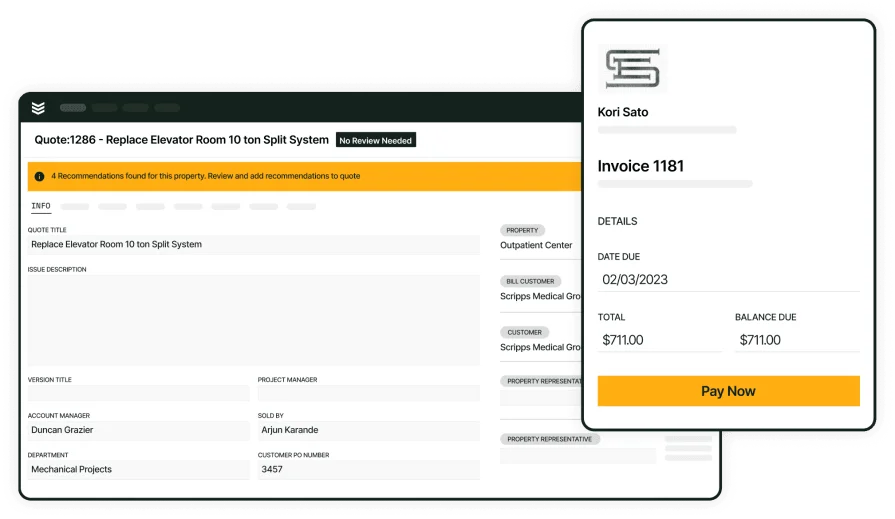
Want to see BuildOps in action?
We help plumbers manage projects better—from the first quote to job closeout.
2. Best for residential: Housecall Pro
Image Source: Housecall Pro
Housecall Pro is designed for residential plumbing contractors who prioritize fast quoting and in-field invoicing. It allows techs to access a mobile price book, generate flat rate quotes, and close out jobs from a tablet or phone — all while on-site. The platform also streamlines payment collection and integrates with customer texting for smoother service calls. However, it may not be the best option for shops that require detailed job costing or advanced dispatch workflows.
How pricing works: Subscription plans start at approximately $59/month, with pricing features included in all tiers.
Features beyond pricing: Tools include review generation, scheduling, GPS dispatching, and text-based communication. Its mobile-first experience stands out for speed and convenience.
What sets it apart for residential service: It’s made for fast-moving service businesses that need to keep quoting and billing frictionless — especially in homes and apartment units.
3. Best for general contractors: Aptora
Image Source: Aptora
Aptora Total Office Manager software is a robust flat rate pricing software solution built for plumbing contractors who also manage other trades. It lets teams customize price books, apply tiered pricing, and bundle labor with materials for highly specific service packages. Designed as a full operations system, it supports plumbing teams managing both service and project-based work. However, it may not be the best option for those seeking a lightweight, mobile-first interface or a simpler setup experience.
How pricing works: Software licensing and deployment are quote-based, with both on-premise and cloud-hosted options.
Features beyond pricing: Aptora includes general ledger accounting, payroll, service agreements, inventory management, and dispatching tools — all in one platform.
What sets it apart for general contractors: The depth of control makes it a strong fit for multi-trade shops or contractors who need end-to-end visibility from pricing to profitability.
4. Best for independent contractors: Service Fusion
Image Source: Service Fusion
Service Fusion offers flat rate pricing software that gives small plumbing shops and independent contractors an easy-to-use platform for quoting and invoicing. It includes digital work orders, price book functionality, customer management, and simple field access. Everything is designed for ease and speed, with minimal setup required. Still, Service Fusion may not be ideal for contractors who expect deep automation, large-scale reporting, or enterprise-level scheduling flexibility.
How pricing works: Pricing starts around $125/month and includes unlimited users, which is a cost-effective setup for small teams.
Features beyond pricing: The system includes VoIP phone integration, GPS tracking, QuickBooks sync, and job reminders — giving contractors a clear edge in communication and billing.
What sets it apart for independent contractors: Its unlimited user pricing and mobile-friendly interface make it perfect for solo operators or small crews that want control without added overhead.
5. Best for small to mid-sized businesses: ServiceTitan
Image Source: ServiceTitan
ServiceTitan delivers a robust flat rate pricing software platform backed by performance tracking, customer communication tools, and advanced analytics. Techs can quote from the field, use price books with service packages, and sync everything directly to invoicing. It supports multi-location shops with scalable tools and systematized workflows. Still, it may not be the best choice for contractors looking for budget-friendly plans or faster onboarding times.
How pricing works: Monthly plans begin around $398/month for office users, with additional fees for technician licenses and add-on features.
Features beyond pricing: Includes job tracking, marketing automation, mobile invoicing, call recording, dispatch optimization, and custom report building.
What sets it apart for small to mid-sized businesses: ServiceTitan bridges field and office through a single system, helping growing plumbing contractors stay on top of operations without losing efficiency.
6. Best for multi-trade contractors: The New Flat Rate
Image Source: The New Flat Rate
The New Flat Rate focuses exclusively on pricing menus built around upsell psychology — with pre-configured flat rate pricing for plumbing, HVAC, and electrical work. It provides good-better-best price tiers that techs can present visually on the job. The system is designed to increase ticket value through consistent customer communication. However, it isn’t a full management solution and may not serve plumbing contractors looking for built-in scheduling, dispatch, or job tracking.
How pricing works: Plans start at $249/month, including access to ready-to-use pricing menus and upsell support tools.
Features beyond pricing: The platform includes sales tracking, basic reporting, customer financing integrations, and onboarding for technician presentation.
What sets it apart for multi-trade contractors: Its multi-trade compatibility and sales-driven design make it a valuable tool for contractors wanting to boost conversion without building pricing from scratch.
7. Best for ease of use: FieldEdge
Image Source: FieldEdge
FieldEdge offers flat rate pricing software that’s lightweight, intuitive, and quick to roll out. Techs can access flat rate price books, send estimates, and generate invoices straight from their mobile device — without spending time learning a complex system. That said, FieldEdge may not be ideal for contractors that need heavy customization or detailed job costing functionality.
How pricing works: Pricing typically starts around $125–$150/month per user, with scalable packages based on features needed.
Features beyond pricing: Features include QuickBooks sync, dispatch boards, time tracking, customer profiles, and service history visibility.
What sets it apart for ease of use: FieldEdge is designed for speed — with minimal training needed and an interface that works well for teams on the move.
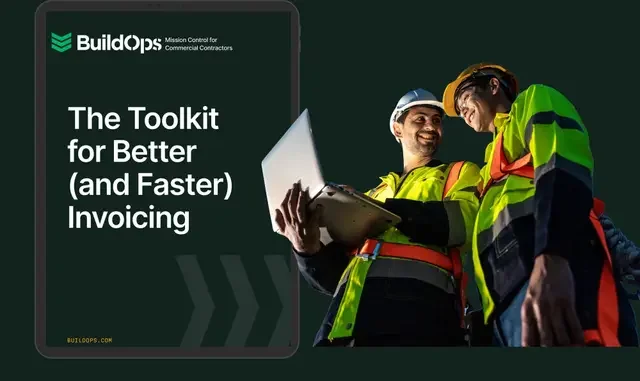
Perfect invoicing and get paid faster
Access leading strategies, real-life examples, and pre-built templates.
6 benefits of using flat rate pricing software as a plumber
Flat rate pricing software gives plumbing businesses something way more valuable than just a digital price book — it gives structure. When every quote, invoice, and upsell follows a set system, your team moves faster, customers trust the process, and office staff stop playing cleanup. The real value shows up in the day-to-day: fewer callbacks, cleaner estimates, and jobs that wrap without drama.
1. Faster quote-to-cash turnaround
Speed matters — not just on the job but after it. Flat rate pricing software shortens the gap between service completion and getting paid. With preloaded rates and mobile-friendly quote builders, your techs can generate estimates, get approvals, and send invoices before they even leave the driveway. No more chasing paperwork or waiting on office approvals.
Over time, this improves cash flow, reduces billing errors, and frees up admin hours that used to be spent rewriting hand-written job notes. For plumbing businesses ready to tighten this loop, our plumbing invoice template lays out how to create a clean, professional invoice that speeds up payment — and keeps billing friction-free.
2. Consistent customer experience
Consistency builds trust. Flat rate plumbing software ensures that every customer — whether they’re a first-timer or a regular — sees the same pricing for the same work. No tech-to-tech variation, no awkward pauses to "check with the office," and no guesswork during high-pressure service calls.
This matters in neighborhoods where word-of-mouth makes or breaks reputation. When pricing is standardized and presented clearly, customers feel more confident signing off on the work. The right flat rate pricing plumbing app backs this up with a clean interface that makes quoting feel professional, not like a gamble.
3. Reduced disputes and callbacks
Misunderstood pricing is one of the fastest ways to lose a customer. Flat rate systems set expectations early — the scope, the cost, the timeline — and help everyone stick to it. This reduces callbacks caused by confusion, missed line items, or verbal-only approvals that fall apart later.
With structured pricing and digital records, every quote becomes trackable and defendable. If a customer calls back questioning the invoice, you can pull up exactly what was quoted and signed — no scrambling. Paired with tools like an estimate invoice app, plumbers can send detailed breakdowns on the spot, leaving nothing to interpretation.
4. Easier training and onboarding for new techs
Flat rate software acts like a cheat sheet for newer plumbers. Instead of relying on memory or shadowing a senior tech, they get a clear, structured list of approved services, rates, and pricing logic — all preloaded into the system. That makes onboarding faster and reduces mistakes made by guesswork.
As your business grows and you bring in green talent, having a tool that shows what to quote, how to package it, and how to explain it to customers gives your newer techs a confidence boost. It also cuts down on questions fielded by the office, freeing up your experienced staff to focus on higher-value work.
5. More accurate financial forecasting
When pricing is consistent across the board, job costing becomes more reliable. Flat rate plumbing software gives you a clean data trail — showing exactly how much revenue each service generates, how long it takes, and how labor and material costs affect margins. Over time, this helps you see which jobs are profitable, which need adjusting, and how seasonal trends impact income.
Add in customer history and service frequency, and it becomes easier to predict the work coming down the pipe. Tools like the CRM for plumbers help tie that financial insight to customer records — connecting estimates to retention, revenue, and long-term planning.
6. More trust and transparency across the team
When pricing lives in a centralized system instead of notebooks, whiteboards, or individual memory, everyone’s on the same page. Techs know what to quote. Dispatch knows what’s included. Office staff knows how to invoice it. That shared clarity reduces miscommunication, finger-pointing, and costly oversights. It also empowers the team. No one’s stuck second-guessing what a job “should cost.” The software answers that, and everyone moves with confidence — from the first call to the final invoice.
4 common flat rate pricing software FAQs answered for plumbing contractors
With all the talk around pricing models, dispatch tools, and quoting systems, it’s easy to get overwhelmed. This section cuts through the noise with straight answers to the questions plumbing contractors ask most when considering flat rate pricing software.
1. What is plumbing flat rate pricing software?
Plumbing flat rate pricing software is a digital tool that helps contractors set and present fixed prices for common services, giving techs a consistent way to quote jobs and get customer approval on-site — without manual calculations or guesswork. It keeps pricing fast, clear, and accurate.
These systems are built to standardize pricing across your team, reduce errors, and build trust with customers. Most come with mobile access, preloaded service items, and invoicing tools that link directly to your job workflows. Whether you run residential repairs or commercial maintenance, this software makes it easier to price accurately and finish faster.
2. How does flat rate pricing software for plumbers work?
At its core, flat rate pricing software makes service quoting faster and more consistent. Here’s how it typically works inside a plumbing business:
- Service managers build a flat rate price book with pre-set job packages
- Techs access the price book on-site using a tablet or mobile app
- Jobs are selected from a list, with standard pricing auto-filled into an estimate
- Customers review and approve the quote digitally — no paper needed
- After the job, the approved quote becomes the invoice
- Office staff can track, edit, or sync the job to their accounting system
- Dispatchers can flag related upsell opportunities using quote history
- Some tools also include automated follow-up and reminders to boost rebookings
This structure eliminates guesswork, speeds up billing, and keeps pricing uniform across your team — no matter who’s in the field.
3. Is flat rate pricing software worth the cost for plumbing contractors?
For most plumbing contractors, yes — but especially if you’re looking to scale. Flat rate pricing software doesn’t just save time quoting; it builds consistency across your team, helps close jobs faster, and reduces costly errors from hand-written estimates. But to really get value, it’s worth looking at platforms that don’t stop at pricing. A flat rate tool becomes far more powerful when it’s connected to dispatching, CRM, scheduling, and invoicing. When all your systems talk to each other, you're not just pricing smarter — you’re running a tighter business across the board.
4. Best practices for implementing a flat rate pricing software
Rolling out flat rate software across your plumbing business takes more than uploading a price list. Follow these steps to make sure it actually sticks:
- Audit your current pricing — Identify what jobs are most common and what pricing inconsistencies exist
- Create a pricing hierarchy — Group services into clear categories and define what's included in each
- Keep the list realistic — Don’t overcomplicate pricing with hundreds of variations out of the gate
- Involve the field team — Make sure techs review the pricing and help spot gaps or gray areas
- Test on small jobs first — Roll out the system in phases and monitor feedback
- Train everyone — Run through real-job scenarios and mock quotes with both office staff and field techs
- Use mobile tools — Ensure techs can access the software in real time on-site
- Set up change controls — Limit who can edit pricing and ensure all updates are tracked
- Integrate with invoicing and CRM — So every quote flows directly into billing and customer records
- Monitor and refine regularly — Use job data to tweak pricing based on time, profitability, and feedback
Flat rate pricing software can help plumbing contractors quote faster, close jobs with confidence, and simplify what used to be messy back-office work. But not all tools offer the same level of flexibility, mobility, or integration. The truth is, many platforms only scratch the surface — offering basic price books without connecting the dots between scheduling, dispatch, invoicing, and job tracking.
That’s where a full-service solution like BuildOps stands out. For commercial plumbing businesses looking to go beyond basic flat rate tools, BuildOps brings everything under one roof — from dynamic quoting to real-time technician updates, invoicing, and beyond. And the features we’ve covered here? They aren’t standard in most software, but BuildOps has them built in.
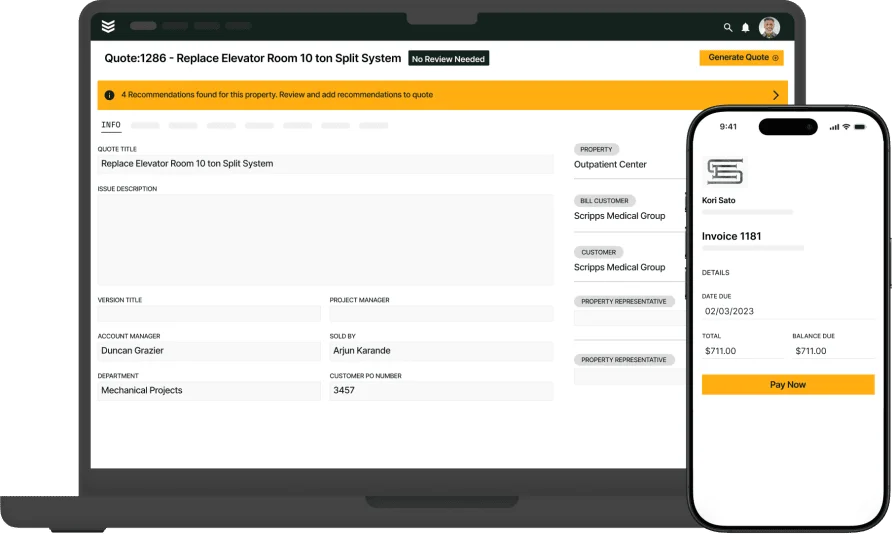
Quote jobs reliably
See how we help plumbers estimate jobs precisely for increased profits.



